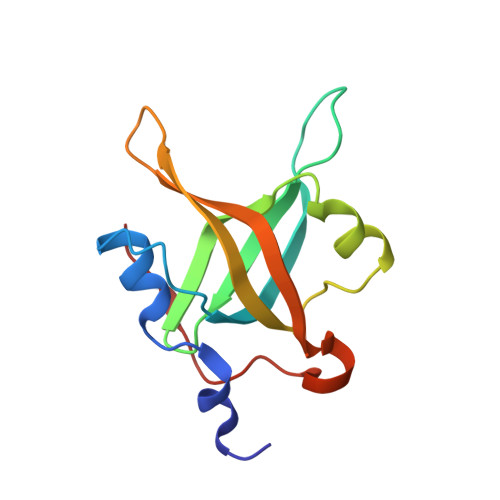Discovery of a potent inhibitor of replication protein a protein-protein interactions using a fragment-linking approach.
Frank, A.O., Feldkamp, M.D., Kennedy, J.P., Waterson, A.G., Pelz, N.F., Patrone, J.D., Vangamudi, B., Camper, D.V., Rossanese, O.W., Chazin, W.J., Fesik, S.W.(2013) J Med Chem 56: 9242-9250
- PubMed: 24147804
- DOI: https://doi.org/10.1021/jm401333u
- Primary Citation of Related Structures:
4LUO, 4LUV, 4LUZ, 4LW1, 4LWC, 4O0A - PubMed Abstract:
Replication protein A (RPA), the major eukaryotic single-stranded DNA (ssDNA)-binding protein, is involved in nearly all cellular DNA transactions. The RPA N-terminal domain (RPA70N) is a recruitment site for proteins involved in DNA-damage response and repair. Selective inhibition of these protein-protein interactions has the potential to inhibit the DNA-damage response and to sensitize cancer cells to DNA-damaging agents without affecting other functions of RPA. To discover a potent, selective inhibitor of the RPA70N protein-protein interactions to test this hypothesis, we used NMR spectroscopy to identify fragment hits that bind to two adjacent sites in the basic cleft of RPA70N. High-resolution X-ray crystal structures of RPA70N-ligand complexes revealed how these fragments bind to RPA and guided the design of linked compounds that simultaneously occupy both sites. We have synthesized linked molecules that bind to RPA70N with submicromolar affinity and minimal disruption of RPA's interaction with ssDNA.
- Department of Biochemistry, Vanderbilt University School of Medicine , Nashville, Tennessee 37232-0146, United States.
Organizational Affiliation:

















